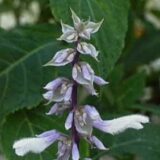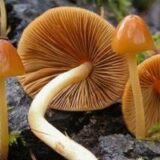Table of Contents
How to Use South American Snuff Like the Natives
What is Cohoba Snuff Like? [Cohoba and Epena Effects]

The most popular snuffs of the South American tribes are known as Cohoba and Epena. The effects of these snuffs are strong and are often so widespread in use because of how good they make one feel. The natives have described these snuffs as the best possible feeling one could have. It is often so good that they will forgo eating or drinking for days sometimes, simply surviving on the inebriating effects of the snuff. The intoxication is powerful and often compared to the effects of other psychedelics and hallucinogens. Both the Guahibo and Catauixi have used the snuff to increase alertness and improve hunting reflexes. They have also been used (more often) by shaman and medicine men for spiritual purposes including trances, prophecy, healing, and to have divine conversations with gods or the spirits.
The Waika tribe uses the hallucinogenic snuff as a way for their shaman to leave their bodies and travel to far away worlds. The ritual is usually a tribal affair, being a full-on dance-crazy ceremony. The chanting that the Indians undergo is hypnotic and can sometimes represent the conversations the shaman must be having with spirits and gods. The Waika believe that the snuff can literally give the souls of the shaman the ability to separate from the body and explore other realms. They believe that the experience leaves the body temporarily without a soul.
Cohoba and Epena are interesting drugs, as beyond the fact they are frequently snorted for their effects, they are both stimulating and hallucinogenic. The snuffs of South America are known to give shaman and tribe members incredible spurts of euphoric energy, while also creating an inebriating, hallucinogenic effect. Snorting devices and ritual tools, as well as the ritual itself, can greatly impact the type of experience someone has with snuff, too. Some devices are capable of delivering more snuff at once, drastically changing a trip and further giving credence to the many varying experiences reported on the many differently-prepared snuffs. Many of the Native tribes which partake in Cohoba use during tribal ceremonies tend to wind up naked, though, many of the tribesman seem to be scantly clad to begin with.
The dreams and visions one experiences on various compounds of DMT can be extremely intricate. Many times, the visions and dreams are able to be completely recalled at later points of time, after the experience. And many times these trips have thick, epic life-changing messages buried in the experiences. The visions can involve intricately perceived divine creatures, beautiful cosmic settings, and hallucinations of fully-developed alternative realities. They can be realistic, prophetic, and most of the tribes members and shaman who experience these visions believe they are 100 percent real. There are some visions which indicate vivid, detailed outlines of the future and ‘fate’, as the shaman would see it.
What Are the Ingredients in Traditional South American Snuff?
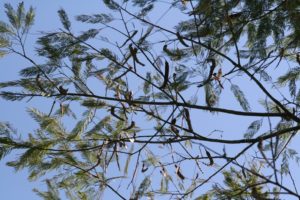
A lot of people around the world believed for nearly 400 years that the psychoactive principles of Cohoba and the like, came from tobacco being included in the preparation. In 1916, a man named William Safford discovered that the beans of Anadenanthera peregrina were the ingredient responsible for the psychedelic effects of the snuff. It has been placed in a number of genera, and has bounced around a bit before being truly understood, it is clear that Safford understood the power of this plant. Today, Anadenanthera is found in the Mimosa and Acacia genera.
The Anadenanthera tree can grow as tall as 60 feet or higher and usually has about a 24 inch diameter. The natives seek this tree for the inner bark, which is where all the psychoactive compounds can be found. Although this tree is most well known for its nativity throughout South America, it is also commonly found throughout the Caribbean. Sometimes the seeds, which are also psychoactive, are used to make a snuff known as cebil. The pods are also used to make Cohoba, and are the most commonly used part of the plant to make the snuff. Sometimes the snuffs made with Anadenanthera are exclusive to that ingredient alone, other times the snuff contains other ingredients (sometimes called additives).
A few years down the road, a native Brazilian botanist named “Ducke” found a different psychoactive snuff that was prepared with a similar variation of ingredients, less for the Anadenanthera. Instead of Anadenanthera, the Indians used the alternative Virola theiodora (or Virola cuspidata), specifically the resin-like sap of the inner bark. This concoction was made by the natives of the upper Rio Negro and the snuff was called “Parica.” A variation was also made by the Punave, which they called “Yakee.” Another variation was made by the Kuripako called “Yato.” And yet even another variation was prepared by the Waika, known as Epena, as previously mentioned.
Both primary ingredients for almost all South American snuffs, Anadenanthera and Virola species, have active principles which are indolic alkaloids. The open-chain alkaloids include: DMT, 5-methoxy-DMT, and bufotenine. Depending upon the exact species, DMT or 5-methoxy-DMT will be the greatest psychoactive constituency. There are some trace amounts of open-chained alkaloids DMT-N-oxide and also 5-hydroxy-DMT-N-oxide. There are also closed-ring tryptamines present in varying quantities. The closed-ring tryptamines include: 2-methyl-, 1,2-dimethyl-7-methoxytetrahydro-β-carboline, and sometimes 6-methoxy-DMT and monoethyltryptamine. The snuffs created by some of the South American tribes can contain various DMT alkaloid contents of more than 11 percent.
A lot of cultures seem to use various parts of the plants for the DMT content in preparing snuff. There is a conflict in records by which some records indicate some tribes prefer snuffs that are made from only the DMT contributing ingredient, while other records indicate multiple ingredients going into the snuff’s preparation. Similarly, some records explain that snuff is restricted to shaman or medicine men only, while other records clearly indicate snuff being used in ceremonies and celebrations that involve the entire tribe. There are also records that prove recreational use among the general population and cultures. Based upon the high-level of reputability of most accounts of early shamanic, medicine men, tribal and cultural use of the snuffs, it is likely that there are sects of all tribes that employ the snuff all ways (recreational, religious, medicinally and more).
How to Make South American Snuff
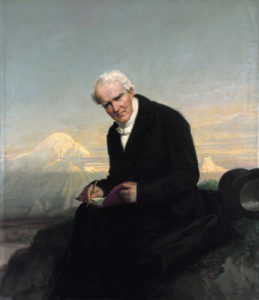
The first person to document preparations instructions of Native tribes for making snuff in great detail, was Baron Alexander von Humboldt. Baron Humboldt was a German explorer and had been spending time near the Orinoco River, studying the plant life and tribes of the area. He recorded the preparation process for Cohoba snuff by the Maypure Indians in 1801. The pods of the Anadenanthera tree were broken open and then moistened to induce fermentation. As the pods changed to a dark black color, they were combined with cassava meal and a couple other ingredients to make small cake-like patties. These patties go through a pulverization phase where they are turned into a fine powder. It was long thought that lime was responsible for the psychedelic effects of the snuff, however, it was later proved that the pods were responsible.
A number of decades later, another explorer named Richard Spruce would document the Yopo prerparation (of the Guahlbo tribe). This tribe also resided near the Orinoco basin, and it was mentioned that many other tribes had very similar preparations, if not exactly the same. Spruce, a British explorer, would take his documentation one step further by actually purchasing all of the equipment and preparing his own batch of Yopo snuff. Spruce would use all of the traditional gear, including a grinder, special plate, wooden spatula-like tool, a special jaguar-bone container, and even a Y-shaped snuffing tube (called a snorter). It has been speculated that Spruce tried the snuff himself, though the documentation is a little fuzzy on that fact.
Another version of South American native snuff is made still today by the Yekwanas tribe. The Yekwanas live at the headwaters of the Orinoco basin. They use a different tree bark to create their snuff and use the snuff in healing rituals. The Yekwanas believe their snuff to be a powerful medicine. Theodor Koch-Grunberg was the first to describe the Yekwana ritual and also showed the snuff to be psychoactive in 1909.
How is Traditional South American Snuff Used? [aka How to Use Native Snuff]
There are a lot of variations in preparations from tribe to tribe, sometimes even within relatively short proximity of one another. There are also variations in the ingredients list from snuff to snuff, however, the administration of the snuff is pretty similar. Usually, snuff is either snorted or smoked, no matter the type of snuff or tribe using the snuff.
How Snuff is Snorted
In some cultures, only shaman or medicine men can use or employ snuffs, however, in other cultures it can be as common as alcohol or tobacco is in Western cultures. Snuff can be difficult to snort (in adequate psychedelic dosages) due to being extremely painful. Typically, snorting snuff creates a harsh burning feeling in the nose lining. Because it is so difficult to snort alone, snuff is typically snorted in South American tribes using a sort of “partner system.” Two people pair up, and load a snorting device with the snuff, then one blows the snuff into the other person’s nose. Usually both nostrils are used, and immediately after one person receives the snuff, they are required to then reload the snuffing device and administer a dose in their partner. It is imperative this happens quickly, as the hallucinogen can set in rather fast.
When snuff is blown into the nostrils it can create a larger thrust than one can amount themselves, making it as deep as the sinuses. This can create crazy sneezing and coughing fits, but the hallucinogenic effects are frequently described as being worth it. Since snuff is such a large part of many tribal cultures, daily users do exist. They suffer from deprecating nasal linings and a host of other ailments, as daily snorting is harmful on one’s health.
How Snuff is Smoked
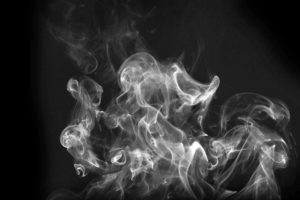
For the many people who feel that snorting is too harmful on the nasal passageways, there is smoking. Smoking snuff has been a well-employed alternative throughout South America…and has also been practiced around the world. Many tribes grind the seeds of the active plants used in the snuffs and smoke small bits of seed or (less frequently due to dangerous potency) roll them in various leaves to smoke. The effect of smoking is still extremely similar, though, the aftertaste is frequently complained about. It only takes smoking about a half of a seed to experience psychedelic effects.
One difference between smoking and snorting South American snuff is the muscle tension and tightness felt when smoking (rather than snorting). Smoking the snuff produces vivid visual distortions and contours. Smoking snuff also produces colorful effects much like a kaleidoscope. There is also a deeper mental high, almost feeling more like sedative trance. It is very common for tribes to combine Anadenanthera colubrina with Salvia divinorum. This produces a much stronger effect, both in hallucinations and in euphoria. This combination also seems to make people want to interact more with music, as they commonly dance with a smile on their face.
Special Spiritual Uses for Snuff
Some of the uses for snuff are not always as widely accepted, even in South American tribes considered the most indigenous. There are snuffs that are restricted for use by the witch doctors of a tribe only. Usually these preparations have many other ingredients, involve boiling the concoction until the water evaporates. The remaining substance can be described as a sediment, or a kind of resin. The sediment is then roasted by itself in the pot over a small fire until it is finally ready to be powdered. Sometimes a ceremonial knife is used to turn the resin into a powder. The ritual for using this spiritual snuff can vary from witch doctor to shaman, but the basic routine involves blowing the snuff into the air around the participating witch doctor, and then also snuffing some of it with the same snorting reed. Emphasis is typically placed on snorting with both nostrils, back to back. This snuff is generally known as “Hakudufha” throughout South American cultures. It is a very strong stimulant and can create giddiness, laughter, dancing, singing and wild dancing.
Last Words: Using Snuff

Snuff has been a really big part of South American tribal life and even in modern cultures of the area. There are a lot of tribes which have their own types of preparations and ceremonies associated with the powder. There are many different ingredients which can go into snuff, albeit some are obviously more common than others (also more prevalent and available in the area). That said, it can be dangerous to use snuff too often, and for some people, even at all. Sometimes members of the native tribes using Cohoba and Epena regularly experience a syndrome known as “Macroscopia” or “Virola syndrome.” Macroscopia causes everyone and everything seem extremely small, almost miniaturized (except for the person using the snuff). This condition is usually accepted as a part of the vision and spiritual journey, however, it is actually a medical condition from taking too much Cohoba or Epena.
Nevertheless, snuff has been a human tradition in many tribes, and tobacco (non-psychedelic) snuff is still sold and used very frequently in Western culture. There are people who have very positive snuff experiences and people who have very negative ones. Snuff is not healthy…it is most certainly hard on the body, however, many Natives and psychonauts have explained the effects as “well worth it,” some going as far as to say it was the “best experience of their life.”
Snuff has been used for so many reasons throughout the years by a variety of cultures. It has been used by shaman, medicine men, tribesman, travelers, curious cats, researchers, people of all religions and people of all walks of life. Snuff will always be prepared in the traditional sense somewhere on Earth, if not for religious purposes, for recreation; And snuff will probably continue to remain most commonly used in South America. It is reasonable to assume that new types of snuff will be concocted, invented and become popular throughout the future, both in South America and around the world (Western culture included).
